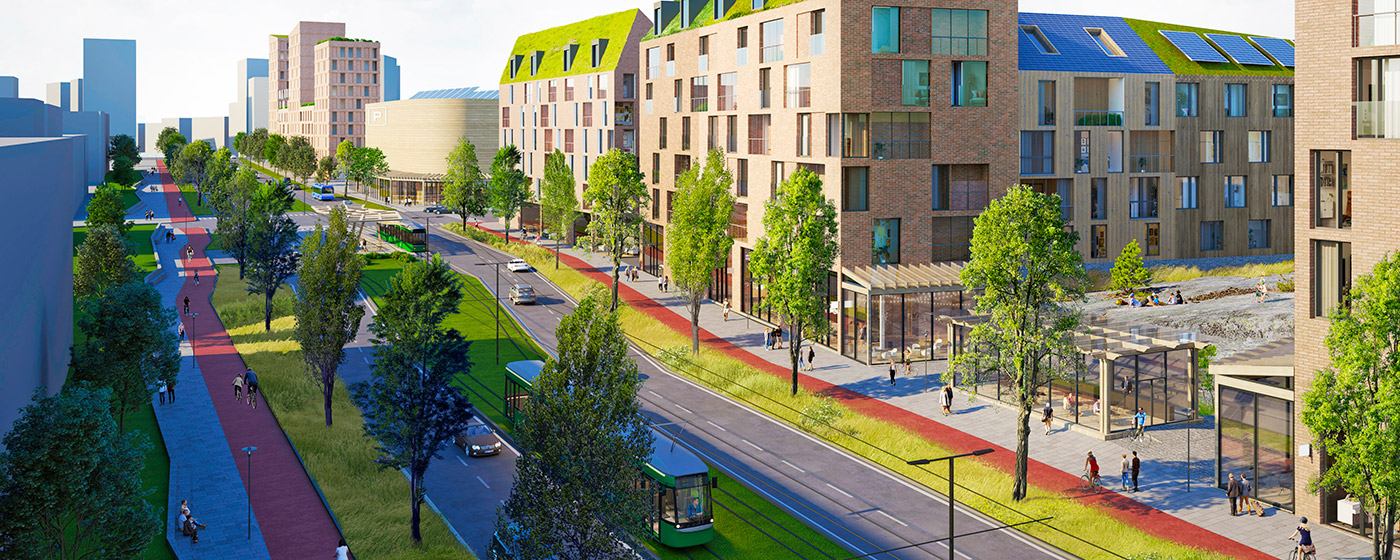Rikhard Manninen, Head of the Urban Planning Division at the City of Helsinki, praises Helen Electricity Network and Fingrid for their active cooperation to identify a solution that every party can use to advance the plan for the Western Boulevard City project.
“In terms of the Western Boulevard City plan, a large tract of land will be freed up for residential development once the transmission lines are moved, and this will enable the dense and efficient construction of the area while helping the City reach its annual residential construction targets,” Manninen says.
The City of Helsinki, Helen Electricity Network Ltd and Fingrid Oyj signed a preliminary agreement on collaboration in November 2020. The overall planning phase of the project is now underway, and each party’s technical design, costs and schedule will be fine-tuned.
“The first town plans for the area have been prepared, and the plans are progressing piece by piece. Residential construction will begin in earnest in the Western Boulevard City towards the end of the 2020s,” Manninen estimates.
Robust power supply
The increased number of inhabitants and the needs of heating and transport will increase electricity consumption in Helsinki, while the volume of electricity generated in the inner city will decrease when the Hanasaari coal-fired power plant is decommissioned in 2024.
In order to safeguard the power supply, Fingrid will build a 400-kilovolt transmission line cable to Helsinki, and the most cost-efficient route for this will be from Länsisalmi in Vantaa to the new Vanhakaupunki transformer station in Viikinmäki. The transmission line cable will be completed by the end of 2026.
“The project is challenging for Fingrid, as we are working with technology that is new to us, and we are building the main grid underground in the middle of an urban environment,” says Jussi Jyrinsalo, Senior Vice President of Grid Planning at Fingrid.
Markku Hyvärinen, Director Of Business Development at Helen Electricity Network, describes the Western Boulevard City plan as one of the most significant joint projects that Helen has been involved in so far.
“The project will promote Helsinki’s target of realising a carbon-neutral energy system, and it also plays a part in communicating the urbanisation megatrend,” Hyvärinen says.
A showroom for carbon-neutral Helsinki
The Western Boulevard City covers an area almost four kilometres in length, beginning on Huopalahdentie at the southern end of Munkkiniemi and extending to Vihdintie via the Haaga roundabout. Rather than becoming a separate urban district, the Western Boulevard City will supplement the existing urban fabric of Munkkiniemi, Niemenmäki, Munkkivuori, Länsi-Haaga and Pitäjänmäki.
In the future, the Western Boulevard City will be home to 14,000 new residents. New services will also be developed for the area. The Jokeri Light Rail line and an additional light rail line under construction will supplement the existing rail network in the area and improve transport connections.
The Western Boulevard City is part of Helsinki’s broader vision of a networked city of rail transport.
The aim is to make the Western Boulevard City a climate-aware construction area, which promotes low-emission construction, renewable energy generation and energy efficiency.
“The area could be described as a showroom for carbon-neutral Helsinki. The Western Boulevard City is intended to become a smart urban environment that makes intelligent use of new innovations to realise an energy system with the lowest possible emissions and create a functional, pleasant and ecologically sustainable urban environment,” says Manninen.






